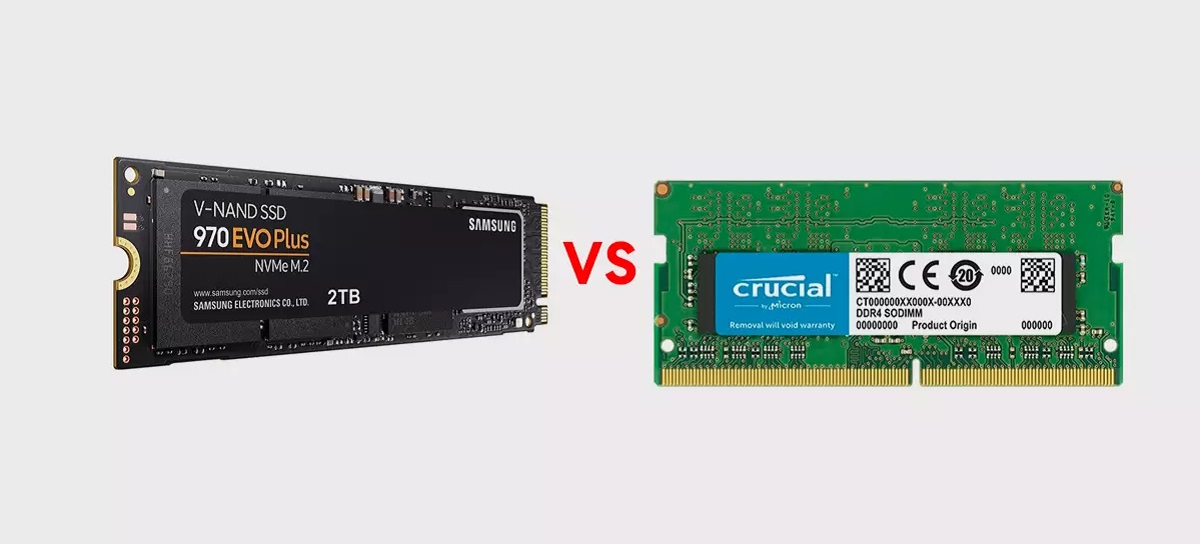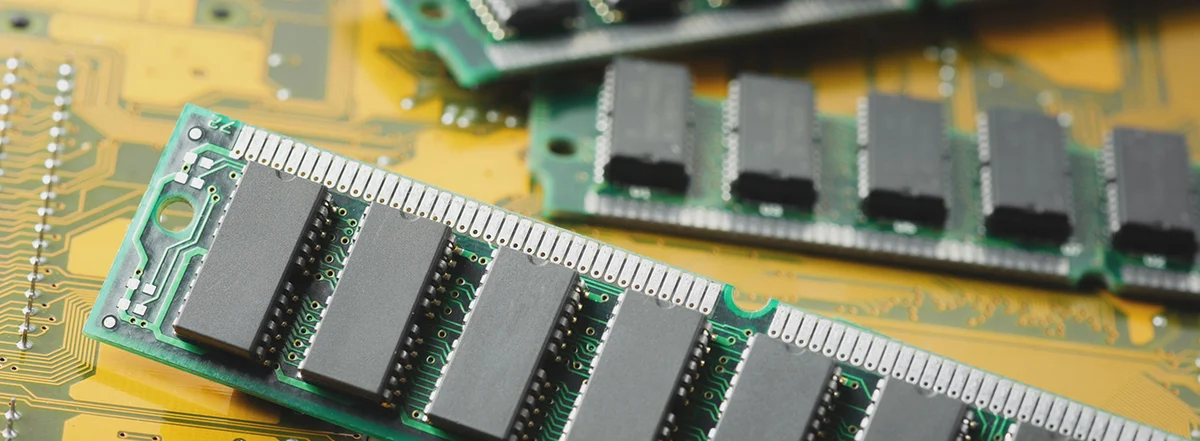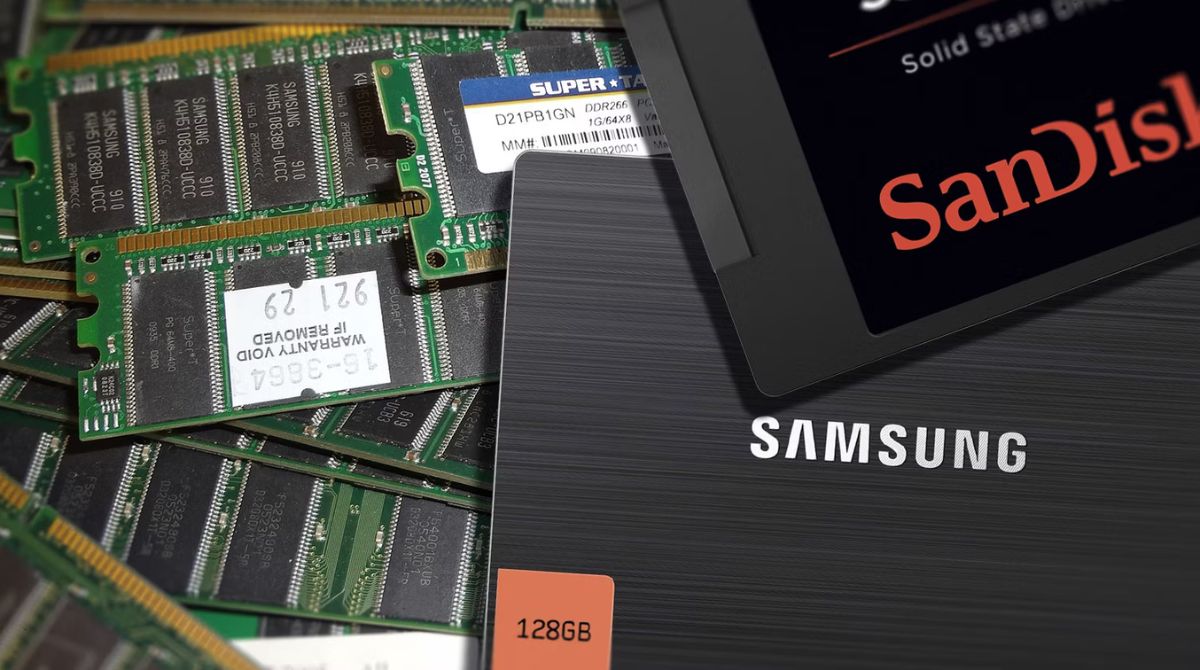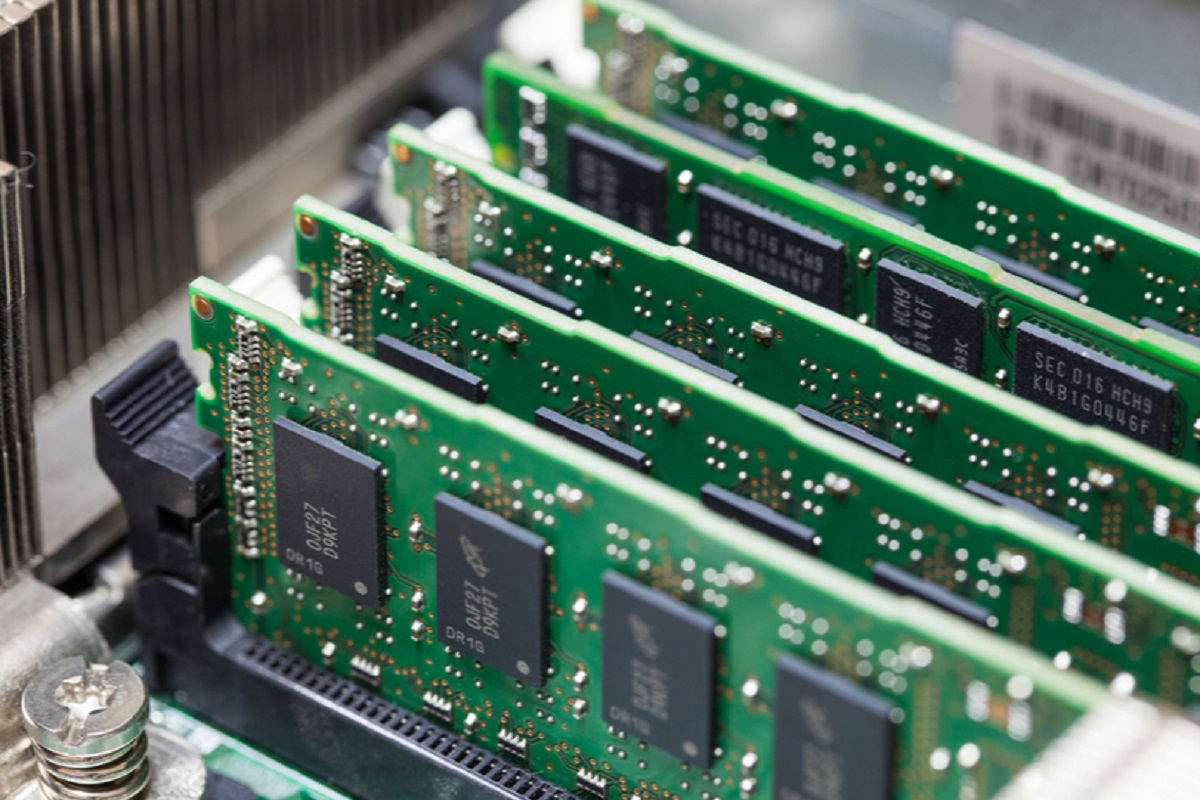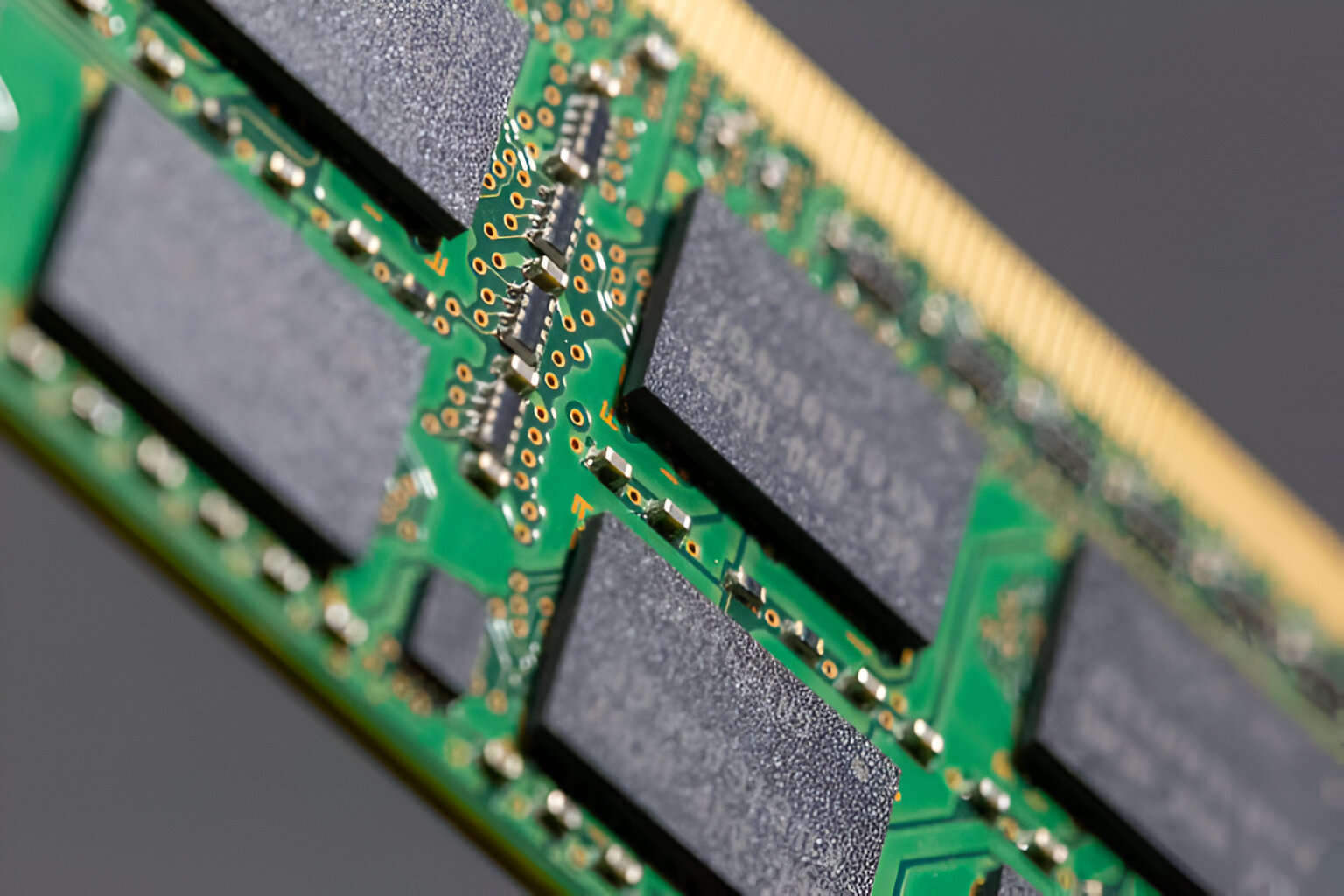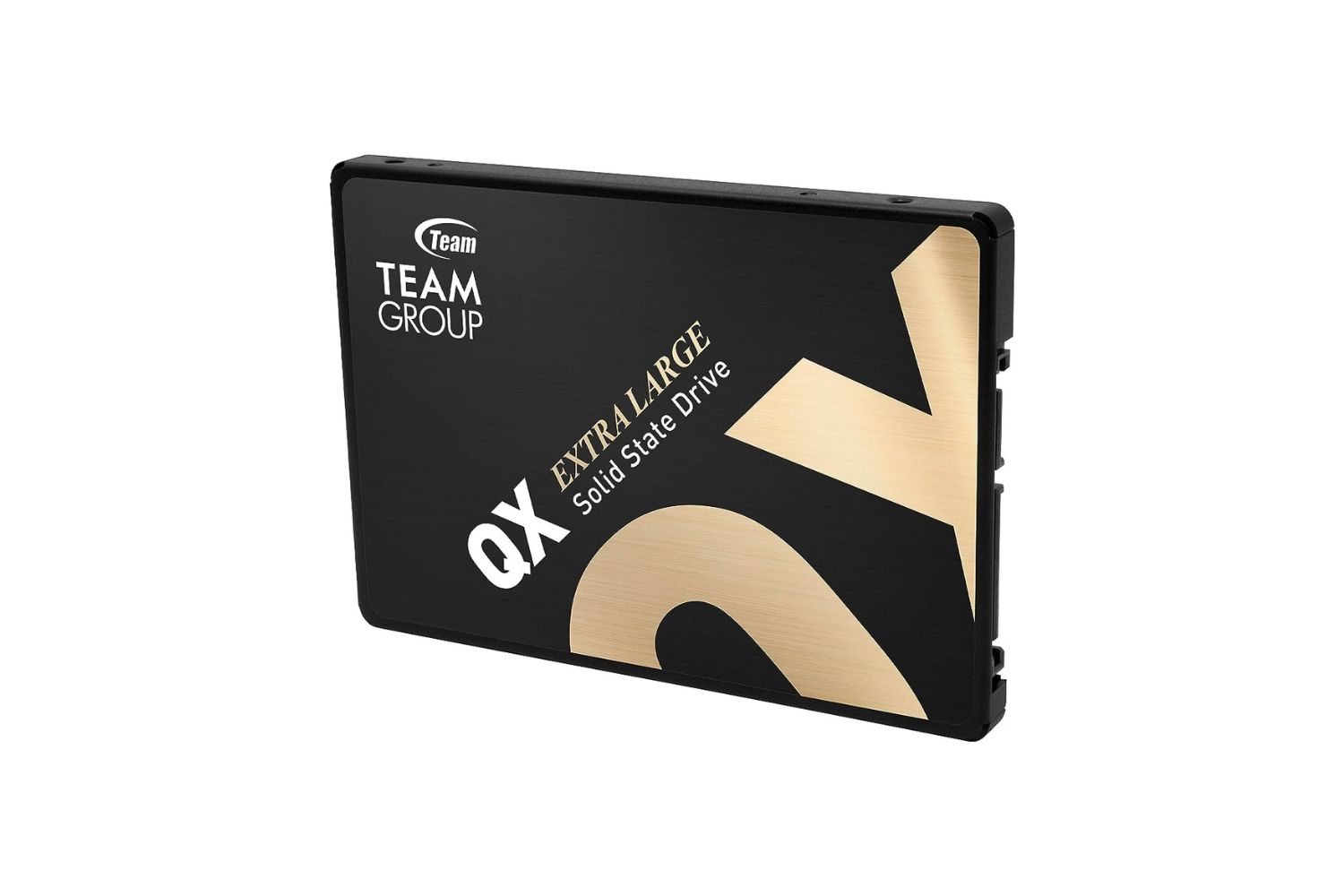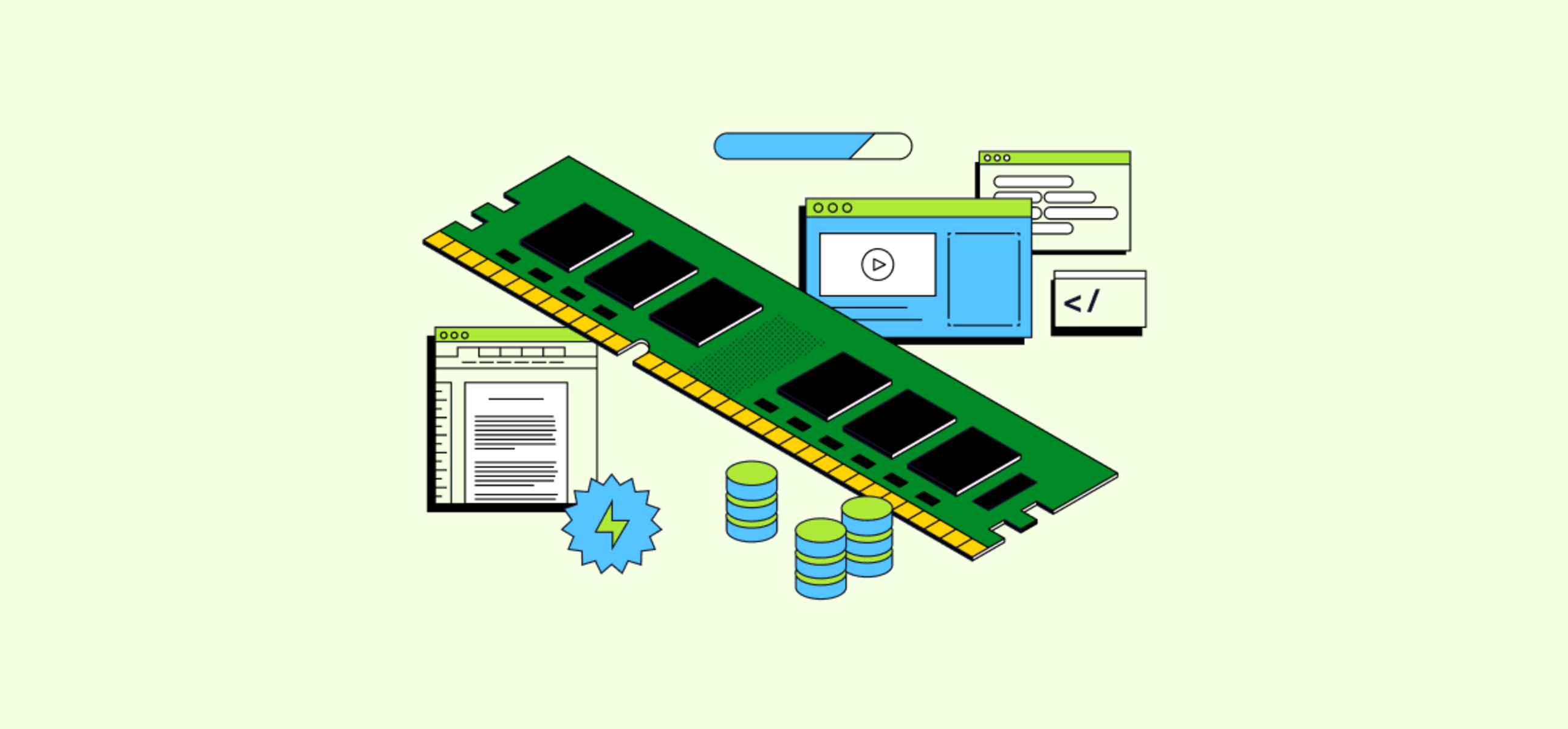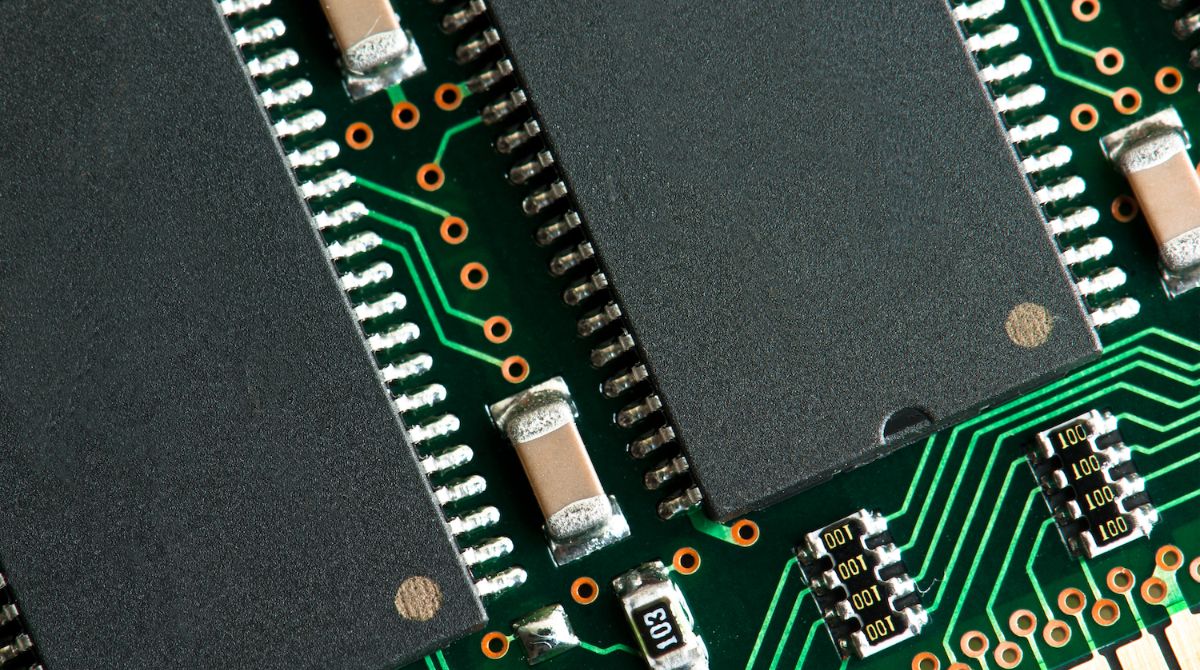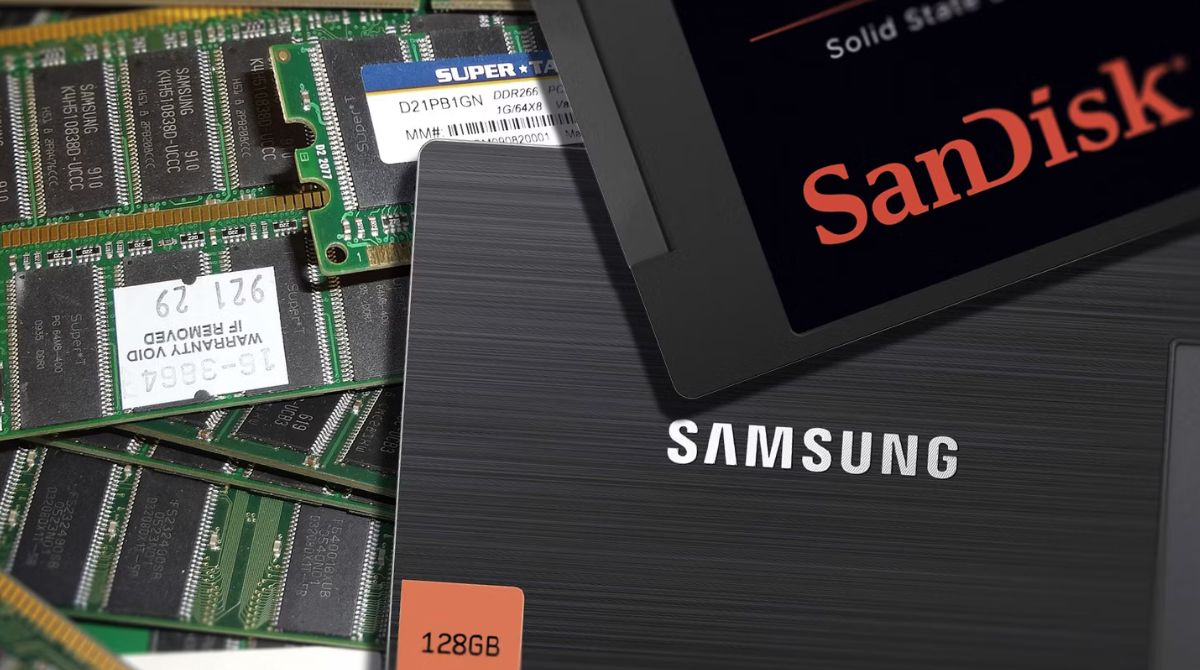Introduction
When it comes to computer hardware, there are two terms that you often come across – RAM and Solid State Drive (SSD). While both RAM and SSD play crucial roles in storing and accessing data in a computer system, they are fundamentally different in their design and functionality. Understanding the difference between RAM and SSD is important for anyone looking to optimize their computer system’s performance.
RAM, short for Random Access Memory, and SSD, an acronym for Solid State Drive, are two distinct components that serve different purposes in a computer system. RAM is a type of volatile memory that provides fast and temporary storage for data that is actively used by the computer processor. On the other hand, SSD is a non-volatile storage device that stores data even when the computer is turned off, serving as a long-term storage solution.
Both RAM and SSD contribute to the overall performance and efficiency of a computer system, but they differ in terms of speed, storage size, price, lifespan, and access methods. In this article, we will explore the core differences between RAM and SSD and delve into their respective functions and types.
So, if you’re curious to know how these two components differ and which one is more suitable for your needs, let’s dive into the details of RAM and SSD and uncover their unique characteristics.
RAM
RAM, or Random Access Memory, is a crucial component of a computer system that provides temporary storage for data that is actively used by the computer’s processor. It acts as a bridge between the processor and the permanent storage devices, such as the hard drive or SSD, by temporarily storing data that the processor needs to access quickly. RAM allows for faster data retrieval compared to permanent storage solutions, making it essential for the smooth and efficient operation of a computer system.
RAM is volatile memory, which means that its contents are lost when the computer is turned off or restarted. This makes it different from non-volatile storage options like SSDs, which retain data even when the power supply is cut off. Because of its temporary nature, RAM plays a critical role in multitasking, as it allows the computer to quickly access and manipulate data from running applications and processes.
There are different types of RAM available in the market, including Dynamic RAM (DRAM) and Static RAM (SRAM). DRAM is the most common type of RAM used in desktop and laptop computers. It stores each bit of data in a separate capacitor within an integrated circuit. SRAM, on the other hand, is faster and more expensive than DRAM but is commonly used in specialized applications that require high-speed and reliable data storage.
RAM capacity is an important consideration when purchasing or upgrading a computer system. The more RAM a computer has, the more data it can store in its temporary storage. This, in turn, allows for faster performance, smoother multitasking, and the ability to run more demanding applications. Modern computers typically come with a minimum of 4GB of RAM, but for optimal performance, it is recommended to have at least 8GB or more, especially for intensive tasks such as gaming or video editing.
In summation, RAM is a crucial component that enables the computer to quickly access and manipulate data, providing temporary storage for actively used information. It plays a significant role in multitasking and overall system performance. Understanding the different types and capacities of RAM can help you make informed decisions when it comes to optimizing your computer’s speed and efficiency.
Definition
RAM, short for Random Access Memory, and SSD, an acronym for Solid State Drive, are two critical components in a computer system that serve different functions in terms of data storage and access.
RAM is a type of volatile memory that provides temporary storage for data that is actively used by the computer’s processor. It acts as a high-speed bridge between the processor and permanent storage devices like hard drives or SSDs.
SSD, on the other hand, is a non-volatile storage device that stores data even when the computer is powered off. It uses flash memory technology, similar to USB drives, to store data in a persistent manner. SSDs offer a faster and more reliable alternative to traditional hard drives, thanks to their lack of moving parts and faster access times.
In summary, RAM and SSD are two vital components of a computer system. RAM provides temporary storage for active data, allowing for fast and efficient access by the processor. SSDs, on the other hand, offer non-volatile, high-performance storage for long-term data retention.
Function
RAM and SSD serve different functions in a computer system, each playing a crucial role in optimizing data storage and access.
The main function of RAM is to provide temporary storage for data that is actively used by the computer’s processor. When you run programs or open files, the necessary data is loaded into RAM for quick access. The processor can then retrieve and manipulate this data at a much faster rate than if it had to retrieve it from a permanent storage device like an SSD or hard drive. Additionally, RAM allows for efficient multitasking by storing data from multiple running applications simultaneously.
SSD, on the other hand, serves as a long-term storage solution. It stores data persistently even when the computer is powered off. When you save files or install programs, they are typically stored on the SSD for future access. SSDs offer faster access times compared to traditional hard drives, making them ideal for applications that require quick data retrieval. They also improve overall system responsiveness, as the computer can boot up faster and load applications more quickly.
Overall, the function of RAM is to provide fast, temporary storage for actively used data, optimizing the computer’s processing speed and ability to multitask. In contrast, SSDs provide long-term, non-volatile storage for files, programs, and the operating system itself, enhancing overall system performance and data accessibility.
Types of RAM
There are different types of RAM available in the market, each with its own set of characteristics and performance capabilities. Here are some of the most common types of RAM:
1. Dynamic RAM (DRAM): This is the most widely used type of RAM in computers. DRAM stores each bit of data in a separate capacitor within an integrated circuit. It requires constant refreshing to maintain data integrity and therefore has slightly slower access times compared to other types of RAM. However, it offers higher storage capacities and is more cost-effective compared to other types.
2. Static RAM (SRAM): SRAM is faster and more expensive than DRAM. It uses a flip-flop circuit to store each bit of data, which eliminates the need for constant refreshing. As a result, SRAM offers faster access times and is ideal for cache memory and high-performance applications. However, it has lower storage capacities and is generally not used for main memory.
3. Synchronous Dynamic RAM (SDRAM): SDRAM is a type of DRAM that synchronizes with the computer’s bus speed. It offers improved performance over traditional DRAM by providing data on both the rising and falling edges of the clock signal. SDRAM is widely used in modern computers and is available in different speeds, such as DDR2, DDR3, and DDR4.
4. Non-Volatile RAM (NVRAM): Unlike other types of RAM, NVRAM retains data even when the power is turned off. It combines the characteristics of RAM and non-volatile storage, making it suitable for applications that require data retention during power loss. NVRAM is commonly used for storing BIOS settings and firmware updates.
These are just a few examples of the types of RAM available in the market. Depending on your specific needs and budget, you can choose the type of RAM that best suits your requirements in terms of speed, capacity, and price.
Solid State Drive (SSD)
A Solid State Drive, or SSD, is a type of storage device that uses flash memory technology to store data electronically. Unlike traditional hard drives, which rely on spinning disks and mechanical read/write heads, SSDs have no moving parts, resulting in faster access times and improved durability.
SSDs offer several advantages over traditional hard drives. One of the most significant benefits is their speed. Since SSDs have no mechanical components, they can access and retrieve data much faster, resulting in quicker boot-up times, faster file transfers, and improved application loading speeds. This makes SSDs particularly beneficial for tasks that require fast data access, such as gaming, video editing, and other resource-intensive applications.
Another advantage of SSDs is their durability. Since there are no moving parts, SSDs are less prone to mechanical failures and are more resistant to shock and vibrations. This makes them ideal for portable devices such as laptops and tablets, where durability is a crucial factor.
SSDs come in various types and form factors to suit different needs. The most common types of SSDs are SATA-based SSDs and NVMe (Non-Volatile Memory Express) SSDs. SATA-based SSDs are compatible with the traditional SATA interface found in most computers, making them easy to install and upgrade. NVMe SSDs, on the other hand, use the PCIe (Peripheral Component Interconnect Express) interface, offering even faster data transfer speeds. NVMe SSDs are typically used in high-end systems that require maximum performance.
When choosing an SSD, storage capacity is an important factor to consider. SSDs are available in a range of capacities, from smaller sizes like 128GB or 256GB, to larger sizes like 1TB or even 2TB. It’s essential to determine your storage needs and choose an SSD with sufficient capacity to accommodate your files, applications, and operating system.
In summary, SSDs provide faster access times, improved durability, and higher performance compared to traditional hard drives. With various types and form factors available, SSDs can be tailored to meet the specific needs of different users, whether for gaming, professional applications, or everyday computing tasks.
Definition
RAM, short for Random Access Memory, and SSD, an acronym for Solid State Drive, are two critical components in a computer system that serve different functions in terms of data storage and access.
RAM is a type of volatile memory that provides temporary storage for data that is actively used by the computer’s processor. It acts as a high-speed bridge between the processor and permanent storage devices like hard drives or SSDs.
SSD, on the other hand, is a non-volatile storage device that stores data even when the computer is powered off. It uses flash memory technology, similar to USB drives, to store data in a persistent manner. SSDs offer a faster and more reliable alternative to traditional hard drives, thanks to their lack of moving parts and faster access times.
In summary, RAM and SSD are two vital components of a computer system. RAM provides temporary storage for active data, allowing for fast and efficient access by the processor. SSDs, on the other hand, offer non-volatile, high-performance storage for long-term data retention.
Function
RAM and SSD serve different functions in a computer system, each playing a crucial role in optimizing data storage and access.
The main function of RAM is to provide temporary storage for data that is actively used by the computer’s processor. When you run programs or open files, the necessary data is loaded into RAM for quick access. The processor can then retrieve and manipulate this data at a much faster rate than if it had to retrieve it from a permanent storage device like an SSD or hard drive. Additionally, RAM allows for efficient multitasking by storing data from multiple running applications simultaneously.
SSD, on the other hand, serves as a long-term storage solution. It stores data persistently even when the computer is powered off. When you save files or install programs, they are typically stored on the SSD for future access. SSDs offer faster access times compared to traditional hard drives, making them ideal for applications that require quick data retrieval. They also improve overall system responsiveness, as the computer can boot up faster and load applications more quickly.
Overall, the function of RAM is to provide fast, temporary storage for actively used data, optimizing the computer’s processing speed and ability to multitask. In contrast, SSDs provide long-term, non-volatile storage for files, programs, and the operating system itself, enhancing overall system performance and data accessibility.
Types of SSD
SSDs, or Solid State Drives, come in different types and form factors, each offering unique features and benefits. Understanding the different types of SSDs can help you choose the right one for your specific needs. Here are some common types:
1. SATA SSD: SATA (Serial ATA) SSDs are the most common and widely used type of SSDs. They connect to the computer’s motherboard via a SATA interface, similar to traditional hard drives. SATA SSDs offer significant performance improvements over HDDs, with faster data transfer speeds and quicker access times. These SSDs are available in various storage capacities and are compatible with both desktop and laptop computers.
2. NVMe SSD: NVMe (Non-Volatile Memory Express) SSDs are designed to maximize performance and take advantage of the high-speed PCIe (Peripheral Component Interconnect Express) interface. NVMe SSDs offer significantly faster data transfer speeds compared to SATA SSDs, making them ideal for handling large files and demanding applications. They are often used in high-end gaming systems, workstations, and multimedia editing environments.
3. M.2 SSD: M.2 SSDs are ultra-compact and widely used in laptops and small form factor desktop computers. They connect directly to the motherboard via an M.2 slot, eliminating the need for cables. M.2 SSDs can support both SATA and NVMe interfaces, providing flexibility in terms of performance and storage capacity.
4. PCIe SSD: PCIe SSDs utilize the high-bandwidth PCIe slots on the motherboard for data transfer, offering even faster speeds than SATA and M.2 SSDs. They are typically used in high-performance systems that require maximum storage performance, such as servers and high-end workstations.
5. External SSD: External SSDs are portable storage devices that connect to a computer using USB or Thunderbolt interfaces. These SSDs provide a convenient and fast way to store and transfer data between computers. They are compact in size, making them ideal for on-the-go use and as a backup solution.
Each type of SSD offers its own advantages in terms of speed, form factor, and compatibility. When choosing an SSD, consider factors such as the computer’s interface compatibility, storage capacity requirements, and intended usage scenario to select the most suitable type for your needs.
Differences between RAM and SSD
While both RAM and SSD are essential components in a computer system, they differ greatly in terms of their functionality, speed, storage size, price, lifespan, and access methods. Here are the key differences between RAM and SSD:
1. Speed: RAM is significantly faster than SSD. RAM provides quick access to data, allowing the processor to retrieve and manipulate it rapidly. On the other hand, SSDs offer faster data transfer speeds compared to traditional hard drives, but they still cannot match the speed of RAM when it comes to accessing data.
2. Storage Size: RAM typically offers smaller storage capacities compared to SSDs. RAM is designed for temporary storage and is usually measured in gigabytes (GB). In contrast, SSDs provide larger storage capacities, ranging from gigabytes to terabytes (TB), making them suitable for long-term file storage.
3. Price: RAM is generally more expensive than SSD when comparing storage capacities. The price of RAM has a direct correlation with its speed and capacity. SSDs, on the other hand, have become more affordable over time, making them a cost-effective solution for high-speed storage.
4. Lifespan: RAM has no specific lifespan limitation, as long as it is handled properly. However, it is a volatile memory, meaning that its contents are lost when the power is turned off. SSDs, on the other hand, have a limited lifespan due to a finite number of write cycles. Modern SSDs, however, have improved durability and longevity.
5. Random Access vs. Sequential Access: RAM provides random access, meaning that the processor can access any data stored in RAM without having to wait for specific sectors or locations. This allows for faster data retrieval. In contrast, SSDs provide sequential access, where the data is accessed in a linear manner. While modern SSDs have improved access times, they are still slower than RAM in terms of random access.
These differences highlight the unique characteristics and functionalities of RAM and SSD. RAM is designed for temporary data storage, providing fast and efficient access for the processor. SSDs, on the other hand, offer larger storage capacities and persistent storage for long-term data retention.
Speed
Speed is a crucial factor to consider when comparing RAM and SSD. Both components contribute significantly to the overall performance and responsiveness of a computer system, but they differ in terms of their speed capabilities.
RAM, or Random Access Memory, is the fastest form of memory in a computer system. It provides quick and temporary storage for data that the processor needs to access and manipulate rapidly. RAM allows for faster data retrieval compared to permanent storage devices like SSDs, as the processor can directly access the data stored in RAM without the need to wait for mechanical parts or seek time.
On the other hand, SSDs, or Solid State Drives, are faster than traditional hard drives but slower than RAM. SSDs use flash memory technology to store data electronically. While they offer faster data transfer speeds compared to hard drives, they still cannot match the speed of RAM when it comes to accessing and retrieving data. The speed of an SSD is influenced by factors such as the type of SSD (e.g., SATA or NVMe) and the specific model or brand.
RAM’s speed advantage lies in its ability to provide immediate access to data. When you open a program or perform a task, the necessary data is loaded into the RAM, allowing the processor to quickly access and manipulate it. This results in faster application loading times, smoother multitasking, and overall improved system responsiveness.
SSDs, on the other hand, offer fast read and write speeds compared to traditional hard drives. They can transfer data at higher rates, allowing for quicker file transfers, faster boot-up times, and improved performance in tasks that involve reading and writing large files, such as editing videos or working with large datasets.
In summary, RAM is the fastest form of memory in a computer system, providing immediate access to data and enhancing overall system performance. SSDs offer faster data transfer speeds compared to traditional hard drives but are slower than RAM. They provide a significant boost in storage performance, allowing for quicker file access and improved system responsiveness.
Storage Size
The storage size is an important consideration when comparing RAM and SSD. Both components serve as storage solutions, but they differ significantly in terms of the storage capacity they offer.
RAM, or Random Access Memory, typically offers smaller storage capacities compared to SSDs. RAM is designed to provide temporary storage for data that is actively used by the computer’s processor. It is volatile memory, meaning that its contents are lost when the power is turned off. RAM capacity is usually measured in gigabytes (GB) and is critical for multitasking and running memory-intensive applications. Common RAM sizes range from 4GB to 32GB or more, depending on the system configuration and requirements.
On the other hand, SSDs, or Solid State Drives, provide larger storage capacities for long-term data retention. SSDs are non-volatile storage devices that retain data even when the computer is powered off. They are available in a wide range of storage sizes, from smaller capacities like 128GB or 256GB up to several terabytes (TB) of storage space. This makes SSDs ideal for storing larger files, applications, and the operating system itself.
The size of an SSD can vary based on factors such as the specific model, form factor, and price. The increasing demand for storage has prompted manufacturers to produce SSDs with larger capacities, making it easier for users to store and access a growing amount of digital content.
It’s important to note that while SSDs offer larger storage capacities, they are not as fast as RAM when it comes to accessing data. Data retrieval from an SSD involves seeking the location of the data on the storage medium, which takes more time compared to the direct access provided by RAM. However, SSDs offer faster data transfer speeds compared to traditional hard drives, resulting in improved overall system performance and faster access to stored data.
In summary, RAM provides smaller storage capacities but delivers fast and temporary access to data for the processor. SSDs, on the other hand, offer larger storage capacities, making them suitable for long-term data storage and retrieval. Choosing the appropriate storage size depends on your specific needs, such as the nature of your work or the amount of data you need to store and access.
Price
Price is a significant factor to consider when comparing RAM and SSD. Both components play crucial roles in a computer system, but they differ in terms of their pricing.
RAM, or Random Access Memory, is generally more expensive than SSDs when comparing storage capacities. The price of RAM can vary depending on factors such as the type (e.g., DDR4, DDR3), speed, and capacity. RAM prices tend to fluctuate due to market demand and supply factors. Additionally, higher-capacity RAM modules typically come with a higher price tag. The cost of RAM increases as you move to higher-speed modules or choose modules with additional features such as RGB lighting or heatsinks.
On the other hand, SSDs, or Solid State Drives, have become more affordable over time. With advancements in technology and increased production volumes, the prices of SSDs have significantly decreased compared to when they were first introduced. SSDs are available in a wide range of price points, allowing users to choose an option that fits their budget and performance requirements. The cost of an SSD depends on factors such as the storage capacity, type (e.g., SATA, NVMe), and brand. Higher-capacity SSDs generally come with a higher price, making them a more significant investment.
When considering price, it’s essential to weigh the benefits and requirements of both RAM and SSD. RAM provides fast and temporary storage for data, maximizing processing speed and multitasking capabilities. SSDs offer no mechanical parts and faster data transfer speeds compared to traditional hard drives, resulting in improved system responsiveness. It’s crucial to assess your specific needs and budget to determine the right balance between RAM and SSD capacity and performance.
Additionally, it’s worth mentioning that investing in sufficient RAM capacity upfront can help avoid the need for costly future upgrades. Upgrading RAM later on can be more expensive due to market fluctuations and potential compatibility limitations with newer technology.
In summary, RAM tends to be more expensive than SSDs, considering storage capacities. SSDs, however, have become more affordable over time, making them a cost-effective solution for higher-speed storage. Balancing your budget and performance requirements is crucial when making a decision on whether to invest more in RAM or SSD.
Lifespan
When comparing the lifespan of RAM and SSD, it’s important to understand the differences in technology and usage scenarios. Both components have specific characteristics that can impact their longevity.
RAM, or Random Access Memory, does not have a specific lifespan limitation. As long as it is handled properly, RAM modules can last for many years. However, it’s important to note that RAM is volatile memory, meaning its contents are lost when the power is turned off. This means that any data stored in RAM needs to be saved to a non-volatile storage device, such as an SSD or hard drive, to preserve it for future use. Thus, while RAM itself does not have a limited lifespan, it requires constant power supply to retain data.
On the other hand, SSDs, or Solid State Drives, have a limited lifespan due to a finite number of write cycles. Each individual memory cell in an SSD can only be written to a specific number of times before it becomes unreliable. However, modern SSDs are built with advanced technology to extend their lifespan and enhance durability. Manufacturers implement wear-leveling algorithms that distribute writes across multiple cells to prevent premature failure of specific areas. Additionally, SSD firmware evolves to better manage erase and write operations, optimize performance, and prolong overall lifespan.
The lifespan of an SSD can vary based on factors such as the specific model, usage patterns, and write-heavy activities like constant video rendering or extensive database operations. Nevertheless, with typical consumer use, an SSD’s lifespan is sufficient for many years of reliable operation.
It’s worth considering that even though RAM and SSD have different lifespans, they serve different purposes within a computer system. RAM provides temporary storage for actively used data that changes frequently, while SSDs offer long-term storage for files, applications, and the operating system. Regular backups to an external storage device can help safeguard your data and mitigate any risks associated with lifespan limitations.
In summary, RAM does not have a specific lifespan limitation, while SSDs have a limited lifespan due to the finite number of write cycles. Proper handling and regular backups can help ensure the reliability and longevity of both components in a computer system.
Random Access vs Sequential Access
RAM and SSD, as storage components, differ in their data access methods: random access and sequential access, each offering unique advantages and use cases.
RAM, or Random Access Memory, provides random access to data, meaning that the processor can access any piece of data stored in RAM without having to wait for specific sectors or locations. This allows for fast and direct retrieval of data, resulting in quick data access and manipulation. RAM’s random access capability is well-suited for tasks that require immediate and frequent access to data, such as multitasking, running applications, or processing real-time data in games or multimedia editing.
On the other hand, SSDs, or Solid State Drives, provide sequential access to data. When accessing data on an SSD, the drive needs to follow a specific order or sequence to retrieve the desired information. This sequential access method is different from random access, as it requires scanning through the stored data until reaching the specific location. While SSDs are much faster than traditional hard drives in performing sequential access, they are still slower than RAM’s random access capability.
The difference in access methods has implications for different types of applications and tasks. RAM’s random access is highly advantageous when fast, immediate access to data is crucial, such as in real-time computing tasks, virtualization, or gaming. The ability to read and write data at high speeds directly from RAM allows for a more responsive and fluid user experience.
Sequential access, as provided by SSDs, is better suited for tasks such as large file transfers, data streaming, or accessing data sets that are read or written sequentially. While SSDs may not match the speed of RAM in random access operations, their fast sequential read and write speeds make them highly effective in handling large files and data-intensive tasks. They can quickly transfer or retrieve large amounts of data in a continuous, sequential manner, making them ideal for applications that involve media editing, data analysis, or database management.
In summary, RAM provides immediate random access to data, allowing for quick and direct retrieval, making it well-suited for tasks requiring immediate, frequent access to data. SSDs, on the other hand, offer sequential access to data, which is ideal for handling large files and continuous data streams, making them a suitable choice for data-intensive applications.
Conclusion
In conclusion, RAM and SSD are vital components that serve different functions in a computer system. RAM provides temporary, fast-access storage for actively used data, enhancing the computer’s processing speed and multitasking capabilities. SSDs, on the other hand, offer non-volatile, long-term storage for files and applications, improving overall system responsiveness and data accessibility.
RAM is significantly faster than SSD in terms of data access, but it provides smaller storage capacities. It is crucial for tasks that involve real-time data processing, multitasking, and running memory-intensive applications. SSDs offer larger storage capacities and faster data transfer speeds compared to traditional hard drives, making them suitable for storing and retrieving large files and improving system performance.
Both RAM and SSD have their unique characteristics and advantages, and the choice between them depends on specific needs and budget constraints. RAM is typically more expensive than SSD for storage capacities, but upgrading RAM can greatly enhance system performance. SSDs, while offering larger storage capacities, are more cost-effective and provide significant improvements in overall system responsiveness.
Ultimately, a well-balanced computer system utilizes the strengths of both RAM and SSD. Sufficient RAM capacity ensures smooth multitasking and quick data retrieval, while an SSD provides ample storage space and fast access to stored data. It’s important to assess individual use cases, budget limitations, and overall system requirements when making decisions about RAM and SSD configurations.
By understanding the differences between RAM and SSD and their respective functions, storage sizes, speeds, prices, lifespans, and data access methods, users can optimize their computer system’s performance and storage capabilities. Both RAM and SSD work in harmony to provide a seamless computing experience, ensuring efficient data storage, quick data retrieval, and optimal system efficiency.







